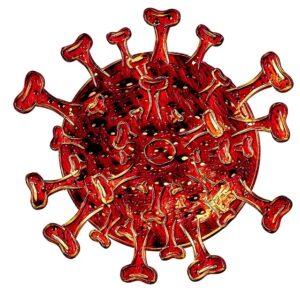 Covid virus
Covid virusVirus consider as borderline between living and non living organism because they have dual nature, some character shows that virus are living but some shows that virus is non living.
Living Character
- They multiply or reproduce inside the host cell.
- They have their own genetic material made up of nucleic acid, either DNA or RNA.
- They show response towards stimuli like light, heat and temperature.
- They are capable of causing diseases and infect living organism plants, animals and even other microorganisms.
- They can undergo mutation.
Non living Character of virus
- They lack of metabolic machinery outside the living cells.
- They lack of cellular organization.Once they infect a cell they take over the machinery of the host cell to replicate themselves.
- They lack ribosomes and cellular enzymes necessary for nucleic acid and protein synthesis.
- They don’t show cell division,growth,development ,nutrition etc.
- They can be crystallized .
- They don’t contain both RNA and DNA together.
History
Virus is an infectious submicroscopic irresistible operator that recreates simply inside the living cells of a life form. Infections can contaminate a wide range of living things, from creatures and plants to microorganisms, including microscopic organisms and Archaea. the revelation of the tobacco mosaic in excess of 6,000 infection species have been depicted in detail of the a lot of kinds of infections in the environment.
The first images of viruses were obtained upon the invention of electron microscope in 1931 by the German engineer.The origin of viruses is unclear because they do not form fossils, so molecular technique are used to investigate how they arose.
Presence / location
Viruses are found in just about each biological system on Earth and are the most various sort of natural entity.The investigation of infections is known as virology, a superficiality of microbiology.
Source of cause disease in living organism
On the level when contaminated, a host cell is compelled to quickly deliver a great many indistinguishable duplicates of the first infection. When not inside a tainted cell or during the time spent contaminating a phone, infections exist as autonomous particles, or virions, comprising of the hereditary materials, for example long atoms of DNA or RNA that encode the structure of the proteins by which the infection demonstrations. a protein coat, the capsid, which encompasses and secures the hereditary materials; and at times .an outside envelope of lipids.
The states of those infection particles extend from basic helical and icosahedral structures to increasingly advanced structures. Most infection species have virions too little to even consider being seen with an optical magnifying instrument as they are one hundredth the size of most microscopic organisms.

